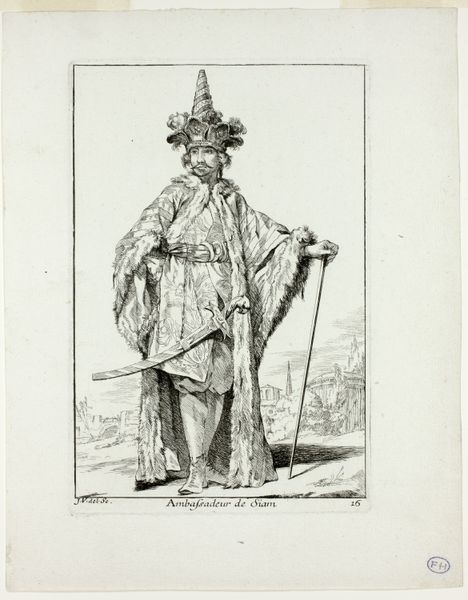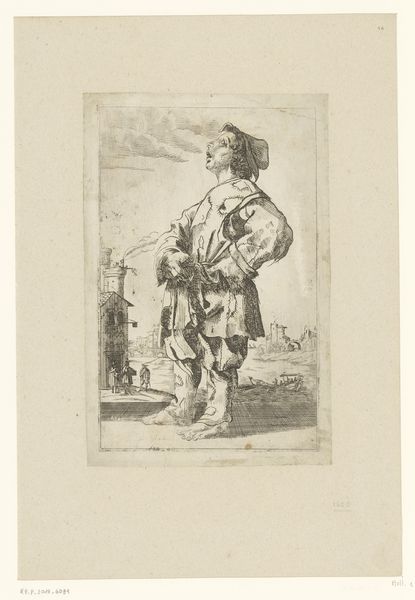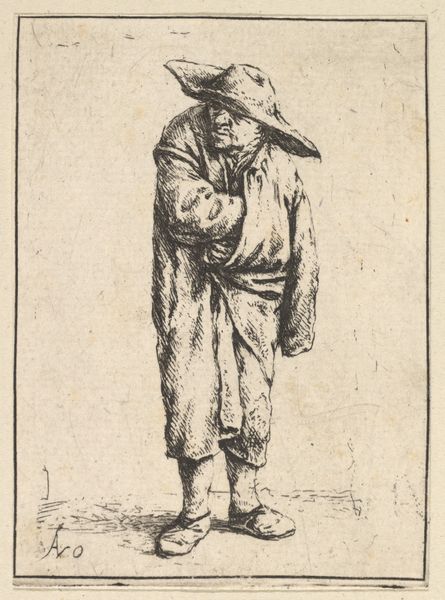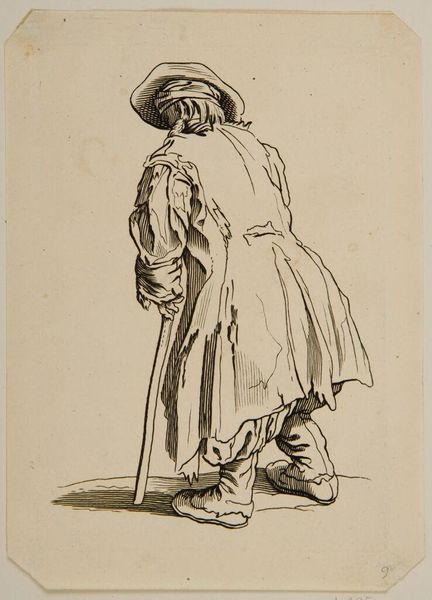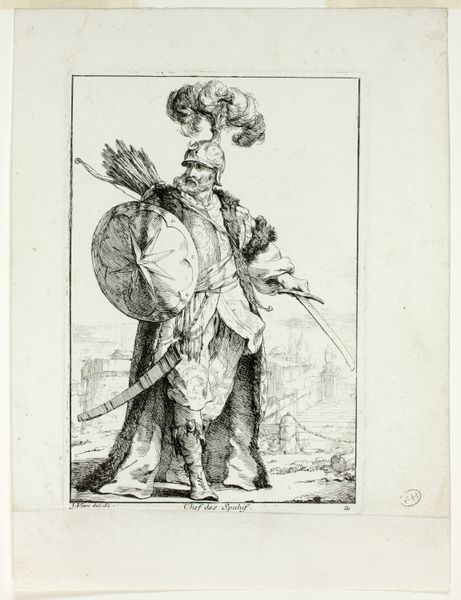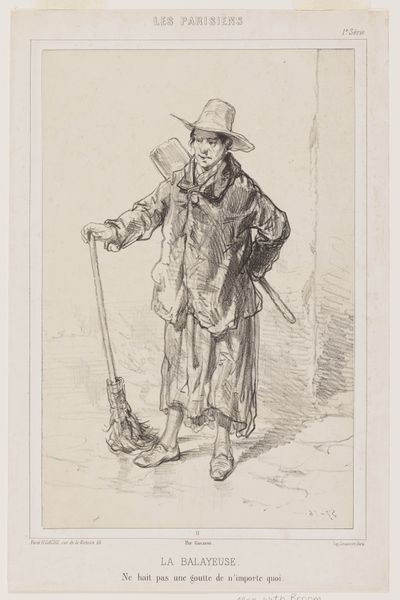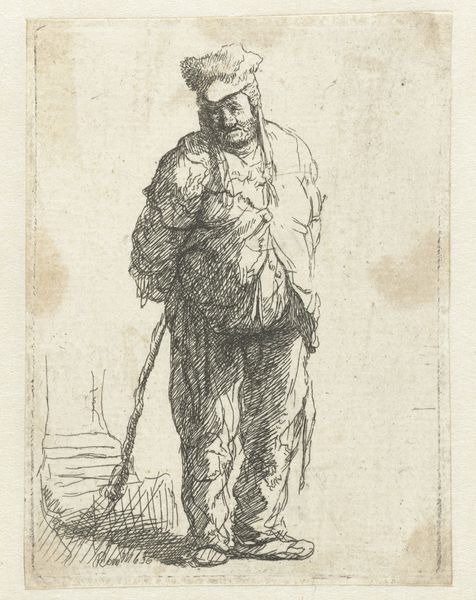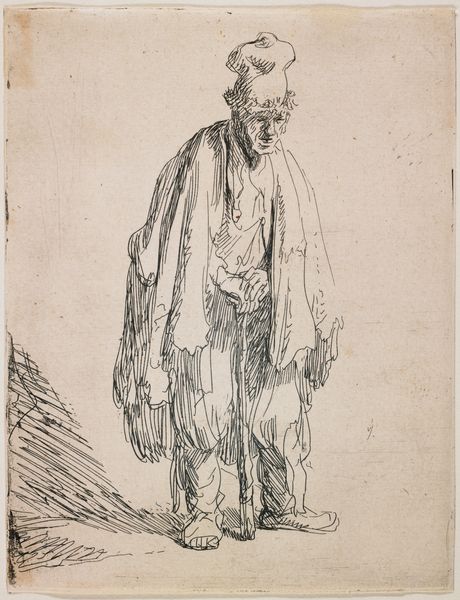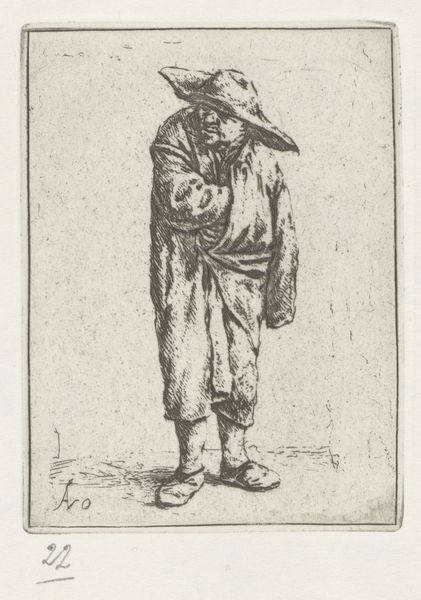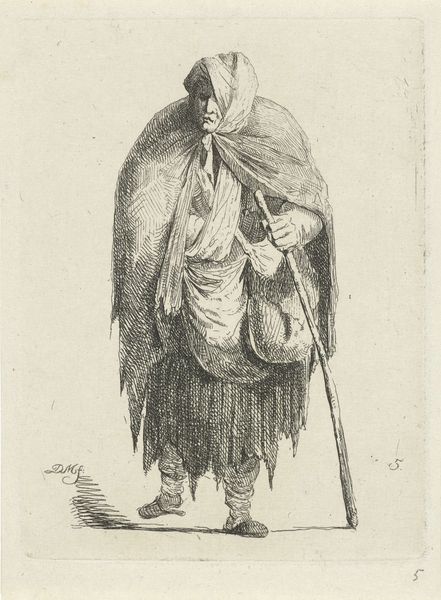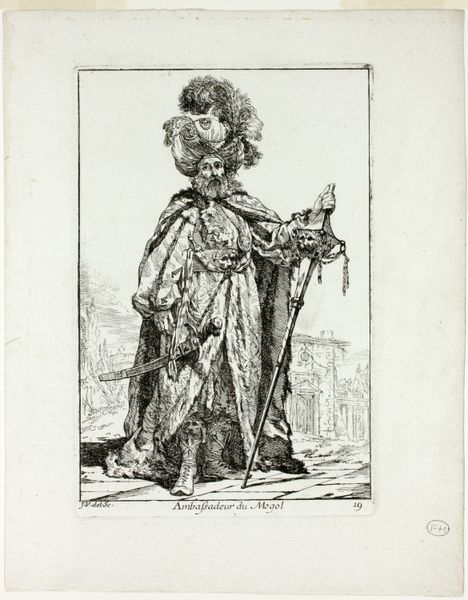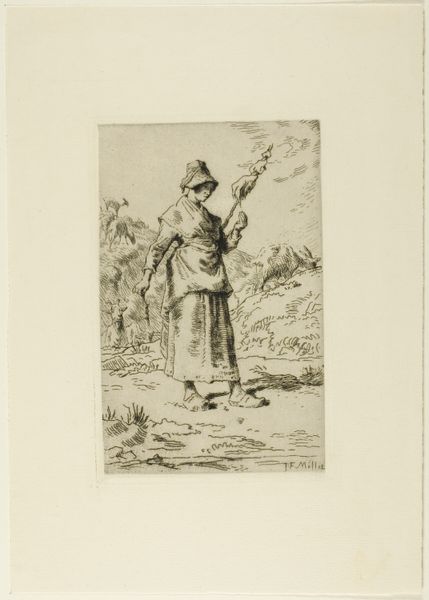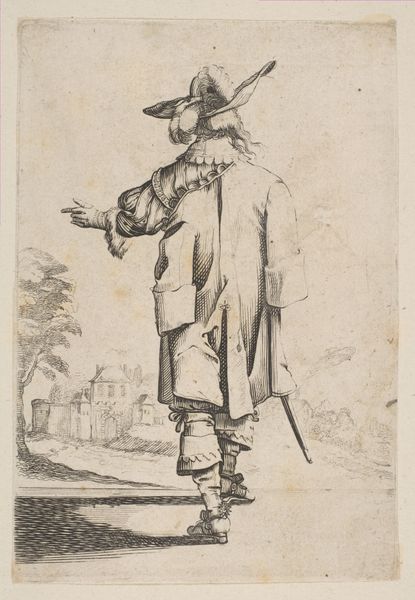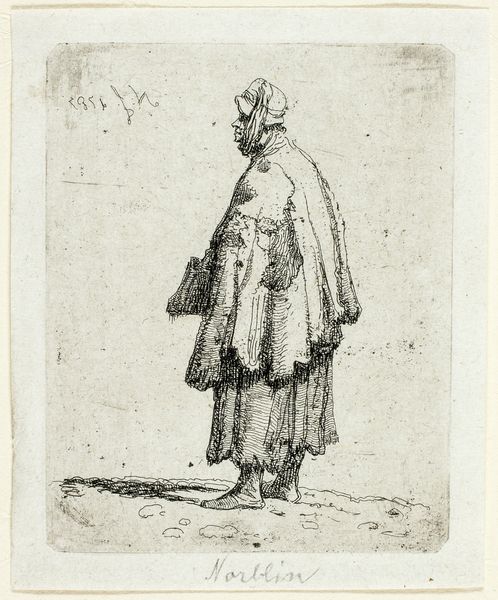
Ambassadeur de la Chine, plate fifteen from Caravanne du Sultan à la Mecque 1748
0:00
0:00
drawing, print, etching, paper
#
portrait
#
drawing
#
narrative-art
#
baroque
# print
#
etching
#
figuration
#
paper
#
orientalism
Dimensions: 195 × 130 mm (image); 203 × 135 mm (plate); 262 × 207 mm (sheet)
Copyright: Public Domain
Editor: So this etching is titled "Ambassadeur de la Chine" by Joseph Marie Vien, made around 1748. It’s striking how detailed the clothing is, especially given that it’s just line work. It feels very posed and formal, but also maybe a little…off? What's your take on it? Curator: The “off” feeling is palpable. This image participates in a long, complex history of Orientalism. Consider the title: "Ambassador of China." Vien, a French artist, likely never met this “Ambassador,” and probably constructed him based on mediated sources and fantasies. This work begs us to question what function this representation plays. How does this portrayal speak more to European power structures and their gaze than to any genuine representation of Chinese culture? Editor: I hadn't thought about it like that. So the accuracy isn’t really the point? Curator: Precisely. Think about who this image was *for*. It’s designed to appeal to a European audience consumed by exoticism and eager to consume images confirming their assumptions of the East as ‘other.’ Notice the ambassador's dress; it's rendered with incredible detail, fetishizing difference. It’s easy to overlook how those details carry implicit assumptions. Do you think that this emphasis flattens the nuances of another culture, making it knowable and, in a sense, controllable for the European viewer? Editor: I guess it does. The more I look at it knowing this, the more staged and…constructed it feels. So it’s not just a picture; it’s a statement? Curator: Exactly! Art like this shows how images can be tools to reinforce existing power structures, teaching us that what we "see" is never neutral, especially when looking at representations of other cultures. What do you think about Vien’s choice to focus on an ambassador for this mission of representation? Editor: It definitely complicates things, showing how art can be both beautiful and deeply problematic when you start to look at the context. Thank you! Curator: My pleasure! It's a potent reminder of the social power art holds.
Comments
No comments
Be the first to comment and join the conversation on the ultimate creative platform.
